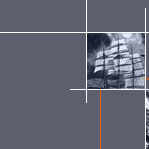|
Maclean's magazine, June 15,
1951
1/2
The Fiery Phantom that sails
Bay Chaleur
By Ian Sclanders
For many generations Maritimers
have told of a flaming ship that sails New Brunswick's north
shore. Some have even pursued it. What's the secret behind
the fiery phantom that sails Bay Chaleur.
No furtive ghost, the Fire
Ship is seen several times a years off New Brunswick's coast
by whole communities. No one has ever photographed it.
Tens of thousands have watched
its eerie performances, scientists have tried for half a century
to unlock its secret, and adventurous fishermen have attempted
to overtake it with their schooners. But the «Fire Ship»
that cruises Bay Chaleur, between New Brunswick's north shore
and Quebec's Gaspé coast, is as much a mystery as ever.
Although it has been witnessed
by more people than any other unexplained apparition in Canada
-and perhaps in the world- it has the elusive quality of the
end of a rainbow. Those who have pursued it say it always
remains the same distance away, and those who have studied
it through telescopes say a strong lens brings out no details
visible to the naked eye.
It looks to most like a sailing
vessel in flames.
Professor Ralph Childs, of New
York's Cooper Union for the Advancement of Science and Art,
collects data about nautical phantoms and, according to his
records, fifteen or twenty of them voyage aimlessly around
this continent's northeastern seaboard. The Fire Ship is the
undisputed queen of the shadowy fleet-as superior to the average
ghost ship as a passenger liner is to a smudgy tramp freighter.
Its rivals are furtive and vague.
They appear at rare intervals, and only to one or two individuals
whose evidence is suspect because it cannot be corroborated.
But the Fire Ship is sighted several times a year-by whole
communities.
It ranges New Brunswick's north
shore for one hundred and twenty-five miles, from the thriving
pulp and paper town of Dalhousie, near the mouth of the Restigouche
in Bay Chaleur, to Miscou Island, where Bay Chaleur joins
the Gulf of St. Lawrence. Occasionally it crosses to the Gaspé
coast to visit such centres as Carleton, Bonaventure and New
Carlisle.
It may hover for hours in one
spot and gradually fade, or it may glow brilliantly and suddenly
vanish, or it may whisk over the waves like the wind. Some
claim to have seen the Fire Ship by day but most evidence
indicates it appears only at night.
Nothing is easier than to drum
up an argument among fisher folk on whether the Fire Ship
is a natural phenomenon or a supernatural manifestation. Many
say that those who believe it's a ghost are silly and ignorant.
Yet hundreds of men and women of acknowledged standing in
their communities insist they have seen a flaming ship that
cannot be explained in scientific terms.
The ship's favorite haunt is
Caraquet, and a motion picture director couldn't select a
more suitable background. The two-hundred-year-old New Brunswick
cod port, once the principal fishing port of British North
America, has six thousand residents and a single street that
winds along Bay Chaleur for twenty miles. At places, this
street is so close to the water that salt spray lashes it
when there's a storm.
Sea-Gull Inn, the best hostelry,
is a wooden, mansion erected generations ago by a Jersey Islander
who struck it rich in the cod trade. It is run by two female
descendants, the Rive sisters. High on a hill, the building
creaks and groans in a gale. Cod barons of another age stare
down on the paying guests with mild distaste from ornately
framed oil paintings in the lounge. In the library are old
books and pictures of barques and brigantines. The house has
an atmosphere of the past, even when it is crowded with tourists.
This same atmosphere surrounds
the whole village, as though the inhabitants who salt and
sun-dry codfish had a similar process for preserving their
traditions and memories.
Everybody in Caraquet, from P.
J. Carroll, general-manager of Gorton-Pew, the biggest fish-packing
company in northern New Brunswick, down to the dark-eyed Acadian
girl who waits on tables at Sea-Gull Inn, has seen the Fire
Ship. Carroll, a thirty-seven-year-old New Englander, moved
to Caraquet from Gloucester, Mass., in 1939. One dark night
when he was still a newcomer he excitedly telephoned the Royal
Canadian Mounted Police that a schooner was burning a couple
of miles from shore.
"Don't worry," said
the officer who answered. "It isn't a schooner. If you
believe in ghosts, it's a ghost. If you don't believe in ghosts,
it's a natural phenomenon. It's the Fire Ship. You're a stranger
here, but you'll get used to it."
Peter Fiott, now in his middle
eighties, is a much-respected citizen. With his snow-white
hair, courtly manners and fastidious dress, the phrase, "gentleman
of the old school," suits him perfectly. Born on Jersey
Island, he was for more than fifty years Caraquet manager
of the salt cod firm of Robin, Jones, Whitman, founded by
Jersey Islanders in 1766.
"I have seen the Fire Ship
hundreds of times," he told me. "It takes various
forms. Usually it is a sailing vessel wrapped in flames. It
has also been a shapeless ball of fire, a ship's lantern,
and once-in 1906-it was a burning steamer.
"How do I explain the Fire
Ship? There are those who say it is a mixture of imagination
and phosphorus, or imagination and St. Elmo's Fire. For myself,
I can't explain the unexplainable, but I have seen it-yes,
hundreds of times." (St. Elmo's Fire is a flamelike electrical
phenomenon seen in the rigging of ships and along the wings
of aircraft.)
Mr. Fiott has yet to observe
figures of tortured seamen on the Fire Ship. Not so other
witnesses.
Walter Good is a middle-aged
man, well-educated, intelligent, with a reputation for honesty.
He owns a prosperous farm on the outskirts of Bathurst.
"I saw the Fire Ship twice,"
he said. "It looked exactly like a three-masted, full-rigged
vessel with sails blazing. There were tiny things squirming
up through the flames-black things like men climbing the rigging."
In 1937 the phantom veered off
its regular route and put on a vivid show in Northumberland
Strait. One of many who watched was Albert Robichaud, of Tracadie,
who told a newspaper reporter : "I could see the rigging
burning and men hurrying around the deck as though fighting
the flames. Some were climbing the masts and some were in
the shrouds. They were apparently living men, but of course
it was an illusion."
Willie Chiasson, storekeeper
and fisherman of Shippigan Island, claims that the Fire Ship
nearly lured him to death. On that occasion it was a small
fishing schooner and wasn't burning.
"I was out fishing fall
herring," Chiasson relates. "A thick fog blew in
and I started for port. There was a boat ahead of me so I
decided to follow it ashore. Suddenly I realized I was almost
on top of a treacherous reef. I also realized that if the
boat I'd been following was a real boat I couldn't possibly
see it-not through a pea-soup fog. Yet I could see it plainly.
It was the Fire Ship-nothing else."
The loneliest place in New Brunswick
is Miscou Island. To reach it you take a ferry from the mainland
to Shippigan Island drive across Shippigan Island and board
another ferry for Miscou, which is flat and bleak and wave-beaten
and strangely beautiful.
Suite à la page
suivante 

|






